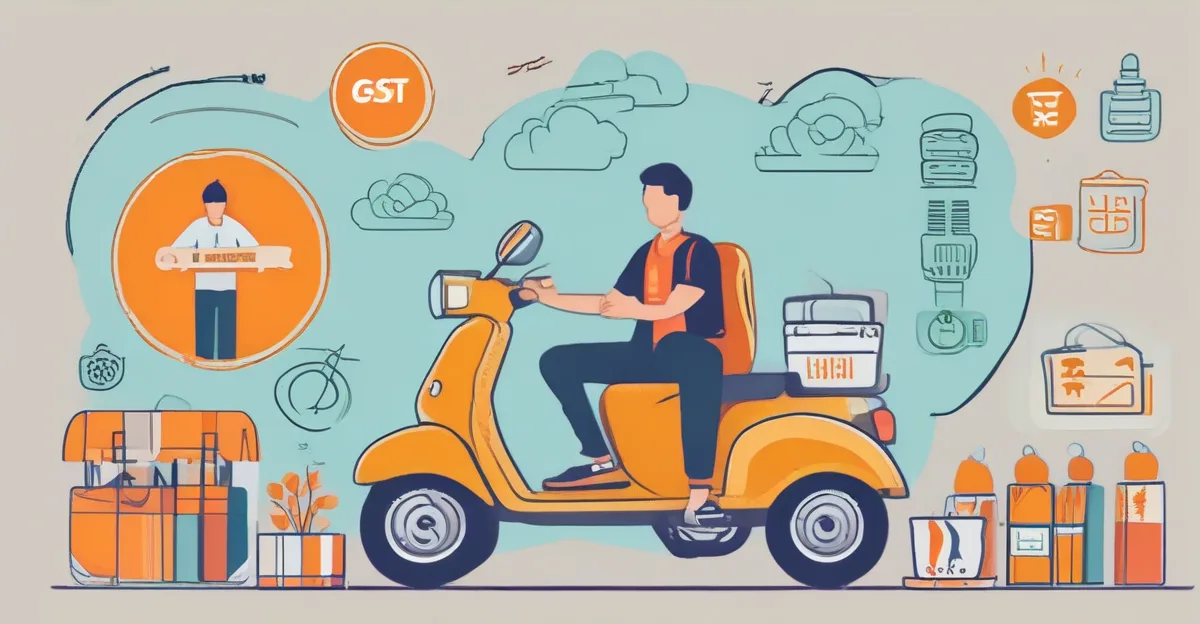Auto-published by Growwh – a smarter way to scale content and marketing. Want to know more? Chat with us.
Swiggy receives a “buy” rating as the food delivery sector in India gains momentum due to GST reforms and increased demand during the festive season.
Auto-published by Growwh – a smarter way to scale content and marketing. Want to know more? Chat with us.
India’s Food Delivery Sector Sees Fresh Momentum: Swiggy Upgraded to Buy
India’s food delivery and quick commerce market is showing renewed optimism after a difficult year. Leading brokerage Motilal Oswal has upgraded Swiggy to a “buy” rating with a target price of Rs 560, representing a potential 32% increase from current levels. The brokerage also reaffirmed its positive outlook on Eternal with a target price of Rs 420.
Ready to take your brand to the next level?
At Growwh, we help startups and emerging brands grow faster with powerful content, creator collaborations, and tech solutions.
Explore what we do →
From Challenges to Opportunities: A Shift in Industry Outlook
Just months ago, the prospects for India’s food delivery platforms were clouded by subdued discretionary spending and significant cash burn. Growth in the sector had begun to slow, with food delivery expanding only about 18% in FY25 compared to nearly 20% in prior years. Analysts are now projecting that growth rates will rebound above 20% over the next 2–4 quarters, largely influenced by the upcoming festive season and recent Goods and Services Tax (GST) reforms.
According to Motilal Oswal, “The perfect storm has given way to multiple tailwinds,” with forecasted growth of 21–23% for both Swiggy and rival Zomato between FY26 and FY27.
Quick Commerce Stabilizes Amid Rationalized Expansion
The quick commerce segment, which focuses on ultra-fast delivery of groceries and essentials, had experienced pressure due to rapid expansion. Platforms like Swiggy and Blinkit aggressively opened dark stores and offered steep discounts to capture market share, which drove up customer acquisition costs from late 2024 into early 2025.
Motilal Oswal noted that this costly growth phase peaked in the March quarter of 2025. Since then, expansion has slowed significantly, discounting has eased, and operating leverage is improving. Swiggy is optimizing its existing infrastructure, while Blinkit, owned by Zomato, is leveraging density gains as it approaches 3,000 stores.
GST Reforms Create a More Favorable Tax Environment
Policy changes have played a critical role in revitalizing the sector. The government recently clarified that delivery fees fall under Section 9(5) of the GST Act, making platforms directly liable for this component of tax. This adjustment closes a previous loophole that resulted in substantial tax notices for both Swiggy and Zomato.
While the direct impact on earnings is estimated to be marginal—between 0.3% to 0.5% of food delivery EBITDA—the clarity brought by this reform is expected to foster adoption in smaller cities, where tax transparency and affordable end prices influence consumer behavior the most.
Broader GST Rationalization Supporting Economic Growth
These developments are part of a broader GST rationalization wave, cutting taxes on medicines, renewable energy components, and household appliances, while exempting individual health and life insurance premiums. Motilal Oswal terms this phase as India’s transition “from an era of reforms to one of reimagination.”
India’s economy has expanded impressively from $468 billion in 2000 to approximately $4 trillion today. Despite ongoing geopolitical tensions and macroeconomic headwinds, corporate leaders express a notably optimistic outlook on growth prospects.
What This Means for Food Delivery Platforms and Investors
For food delivery platforms specifically, this turning point could be transformative. After years marked by investor skepticism regarding profitability, contribution margins for quick commerce are expected to steadily improve. Food delivery growth forecasts have been revised upward, putting companies like Swiggy and Zomato back in the spotlight.
Swiggy is reportedly preparing for a future listing, while Zomato’s stock has rebounded significantly due to anticipated improvements in Blinkit’s unit economics. Motilal Oswal sums up the sector’s outlook as follows: “Rational competition, moderating expansion and policy support are creating a path to sustainable profitability. The outlook for the sector has rarely looked stronger.”
Key Takeaways:
- Motilal Oswal upgrades Swiggy to ‘buy’ with a 32% upside target price of Rs 560.
- Food delivery growth expected to rebound beyond 20% over next 2-4 quarters.
- Quick commerce expansion slows; operating leverage improves as platforms optimize.
- GST reform clarifies tax liabilities, boosting consumer confidence in smaller cities.
- Broader GST cuts signal India’s economic shift towards growth and reimagination.
- Sector shows strong path towards sustainable profitability and investor optimism.
India’s food delivery and quick commerce sectors stand at a crossroads, transitioning from a challenging past to a promising future backed by regulatory clarity, measured expansion, and robust demand. Investors and consumers alike can expect continued innovation and growth in this rapidly evolving landscape.
Source
This article was auto-generated as part of a smart content campaign. Curious how we do it? Chat with us to learn more about our content automation systems.
This article was auto-generated as part of a smart content campaign. Curious how we do it? Chat with us to learn more about our content automation systems.
Discover more from Growwh
Subscribe to get the latest posts sent to your email.


